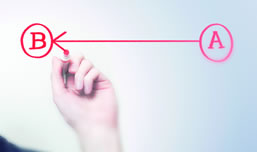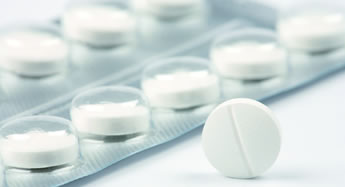Directive on falsified medicines
In the fight against counterfeit drugs, will the new EU Directive help?
January 2013
In Europe, falsified medicinal products are often associated with so-called “lifestyle medicines” – just check your spam folder for a range of examples. In reality, the problem isn’t restricted to potency enhancing drugs and weight-loss pills. Flu remedies have been falsified, as well as live-saving cancer drugs and other patent protected medicinal products, just as much as generic medicinal products. The EU’s Falsified Medicines Directive, which has recently come into force in many EU countries, introduces further measures aimed at preventing the entry of falsified medicines into the legal supply chain.
As you might expect, the bulk of counterfeit medicines are distributed via the internet. The World Health Organisation estimates that more than 50 per cent of medicinal products sold via the internet are falsified. However, this figure may be too low, as it focuses on medicines that infringe trade marks or patents.
Danger to life and limb
The problem of falsified medicinal products isn’t restricted to the economic damage of the holders of the rights. The threat to public health is alarming. These products usually contain sub-standard or falsified ingredients and active substances, as well as incorrect dosages of active substances. The ingredients often are contaminated or even toxic. Even the paint used to mark roads has been pressed into pills. Medicinal products that have passed their expiry date also find their way to patients. The health threat to patients has many elements to it: not only are they ingesting contaminated and poorly made products, but they are probably not getting the dose of medicine that they need.
Pharmacovigilance – another problem for the manufacturers
Manufacturers and distributors of original medicinal products also have a substantial interest in combating counterfeits of medicinal products. Not only do they suffer economic damage because of the decrease of sales, but they are also faced with enormous problems concerning compliance with their pharmacovigilance obligations. Manufacturers are required to keep accurate records concerning adverse reactions and incidents, and falsified medicinal products will distort the safety messages that come from this data.
The new Directive
In an attempt to enhance protection against falsified medicinal products, the European Union agreed the Falsified Medicines Directive in July 2011.
 The new Directive targets all levels of the supply chain for medicines, in an effort to ensure that there are no weak links. The Directive also contains an obligation for manufacturers to report suspicions of counterfeit medicines. Since today most pharmaceutical active substances are not produced in the EU, another objective of this Directive is to strengthen the international cooperation between the relevant authorities, so that an obligation to high manufacturing and quality standards can also be enforced in third countries.
The new Directive targets all levels of the supply chain for medicines, in an effort to ensure that there are no weak links. The Directive also contains an obligation for manufacturers to report suspicions of counterfeit medicines. Since today most pharmaceutical active substances are not produced in the EU, another objective of this Directive is to strengthen the international cooperation between the relevant authorities, so that an obligation to high manufacturing and quality standards can also be enforced in third countries.
The packaging of medicines will have to be marked in a forgery proof way. In addition, the Directive recommends that manufacturers implement a marking system which will allow pharmacies to verify the authenticity of the medicines at the final point in the supply chain, namely dispensing to the patient.
Seal of quality for websites offering medicinal products
Another focus of the Directive is the distribution of medicinal products via the Internet. To the extent that this route of distribution is permitted in the member states, legal internet pharmacies will be identified with a quality seal and shall provide a link to the relevant regulator's website. Consumers can then look to the quality seal for reassurance as to the genuine nature of medicines available from the relevant website, and they shall be able to understand from the regulator's website the dangers of buying medicinal products from illegal providers.
But not all obligations set up by the Directive shall apply to all medicinal products. OTC medicinal products can be excluded from the obligations, as they are regarded as being not as attractive for counterfeiters due to their lower price. If in a particular case it is necessary, the strict rules of the Directive can also be applied to non-prescription drugs.
If you have any questions on this article or would like to propose a subject to be addressed by Synapse please contact us.



